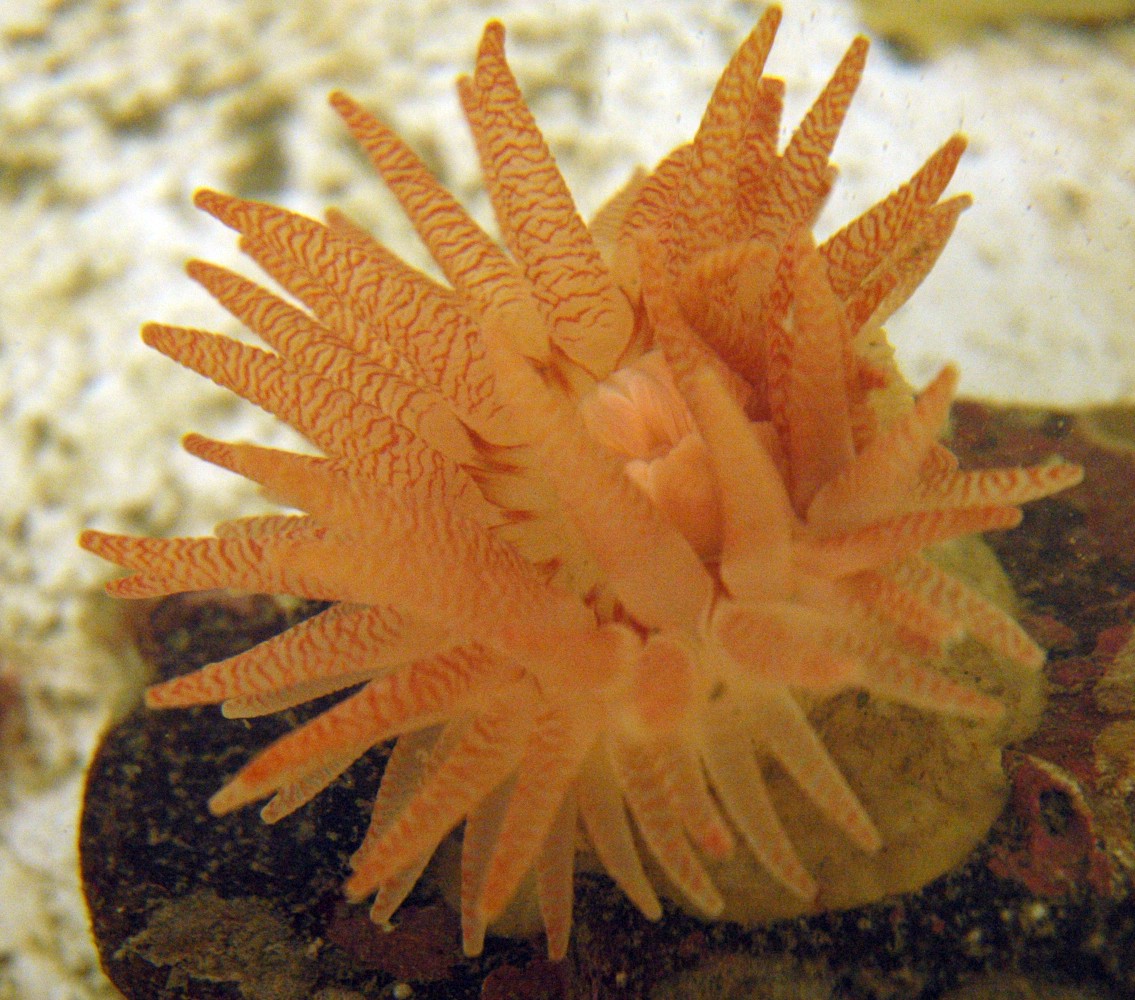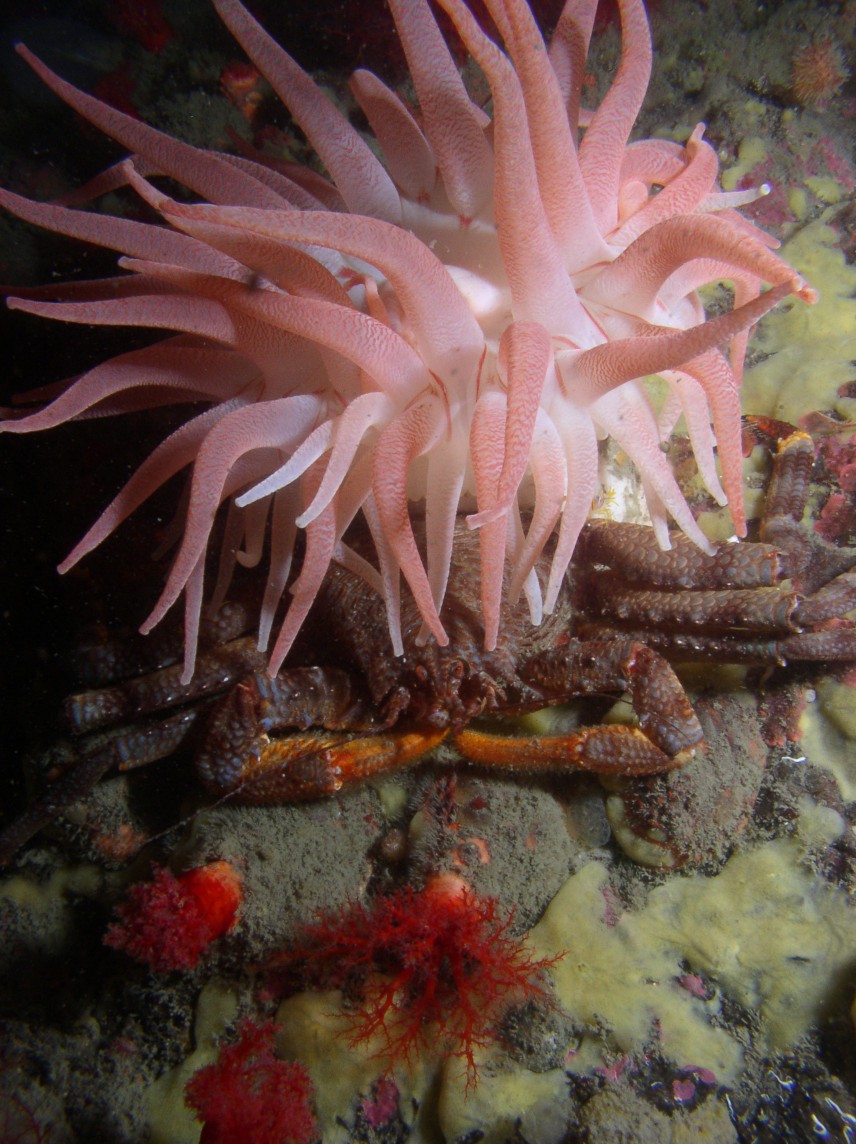How to Distinguish from Similar Species:Urticina crassicornis has similar colors but the stripes on the tentacles are broad and it does not have the "contact tentacles" (which are usually hard to find). Epiactis ritteri has radiating lines on the oral disk also but the lines are white and there are no tubercles on the column.
Geographical Range: Aleutian Islands to Puget Sound
Depth Range: Subtidal to at least 300 m.
Habitat:
Biology/Natural History:
This anemone
broods its young internally. A common symbiont is the
candy-striped
shrimp Lebbeus
grandimanus (photo).
Heptacarpus kincaidi is another common shrimp symbiont (photo).
The heart crab Phyllolithodes
papillosus often shelters under the anemone when
molting (photo).
We have also observed the scaled crab Placetron wosnessenskii
sheltering
under the anemones (photo).
| Return to: | |||
| Main Page | Alphabetic Index | Systematic Index | Glossary |
References:
Dichotomous Keys:Kozloff 1987, 1996
General References:
Harbo,
1999
Scientific Articles:
Web sites:
General Notes and Observations: Locations, abundances, unusual behaviors:
This anemone is common on the deep slope on the outer side of Northwest Island.
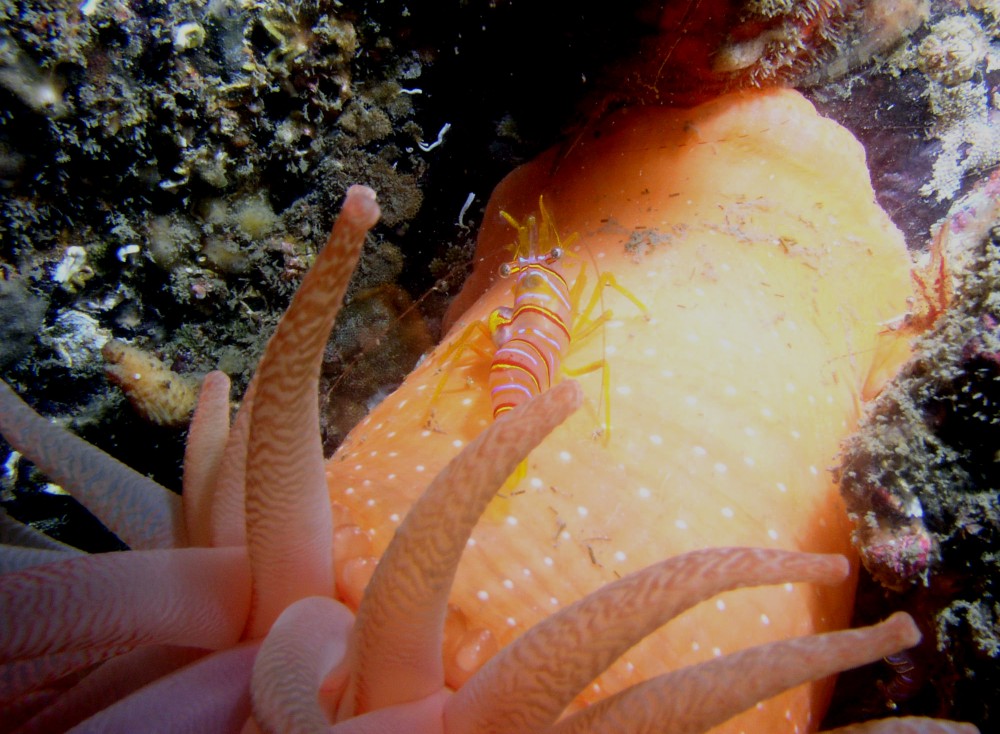
In this underwater photo by Kirt Onthank, Taken at Northwest Island,
the whitish knobs (sometimes called "contact tentacles") used for
fighting
other anemones can be seen in a ring around the outside of the normal
tentacles.
Most often these knobs are hard to see. This animal was in a
group of several anemones and may have them exposed because of recent
agonistic
behavior.
Do not confuse the white tubercles easily visible on the side of the
column with the contact tentacles.
The shrimp on the anemone's column is the candy-striped shrimp Lebbeus
grandimanus, which is a common symbiont on this and
several other
anemones.
The shrimp has a parasite in its left gill chamber, probably a bopyrid
isopod.
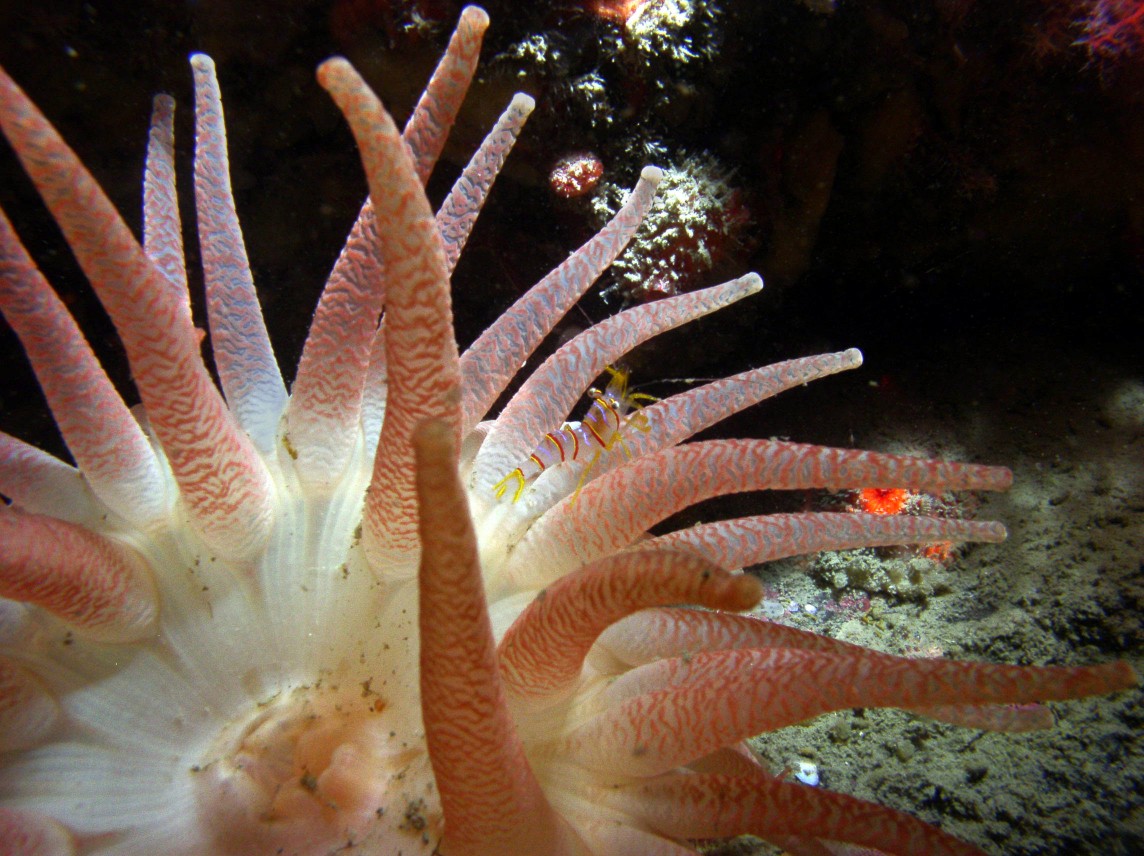
Here is another Lebbeus grandimanus shrimp on another Cribrinopsis fernaldi. Photo by Kirt Onthank summer 2007
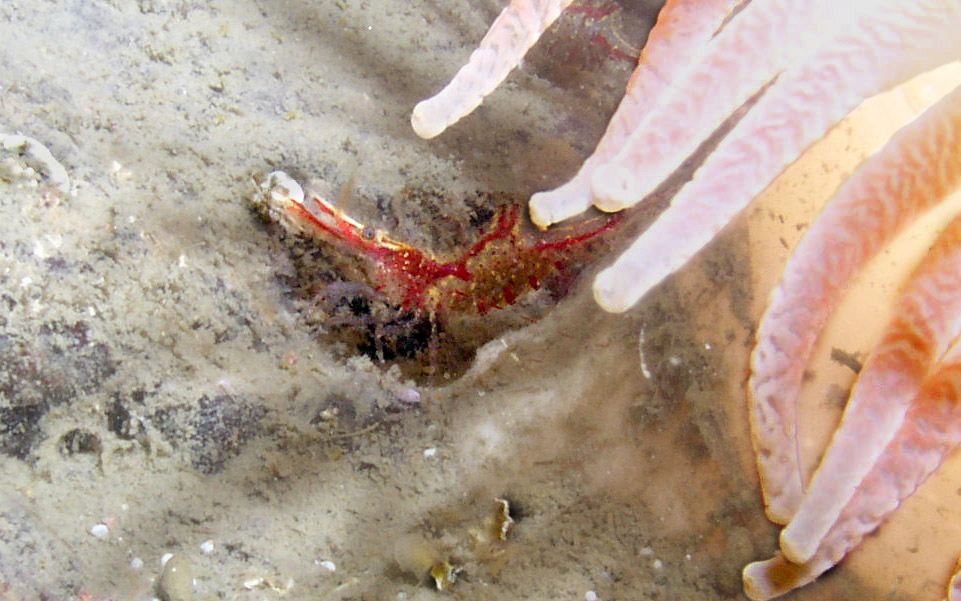
Heptacarpus kinkaidi
is another
common symbiont. Photo by Kirt Onthank, summer 2007
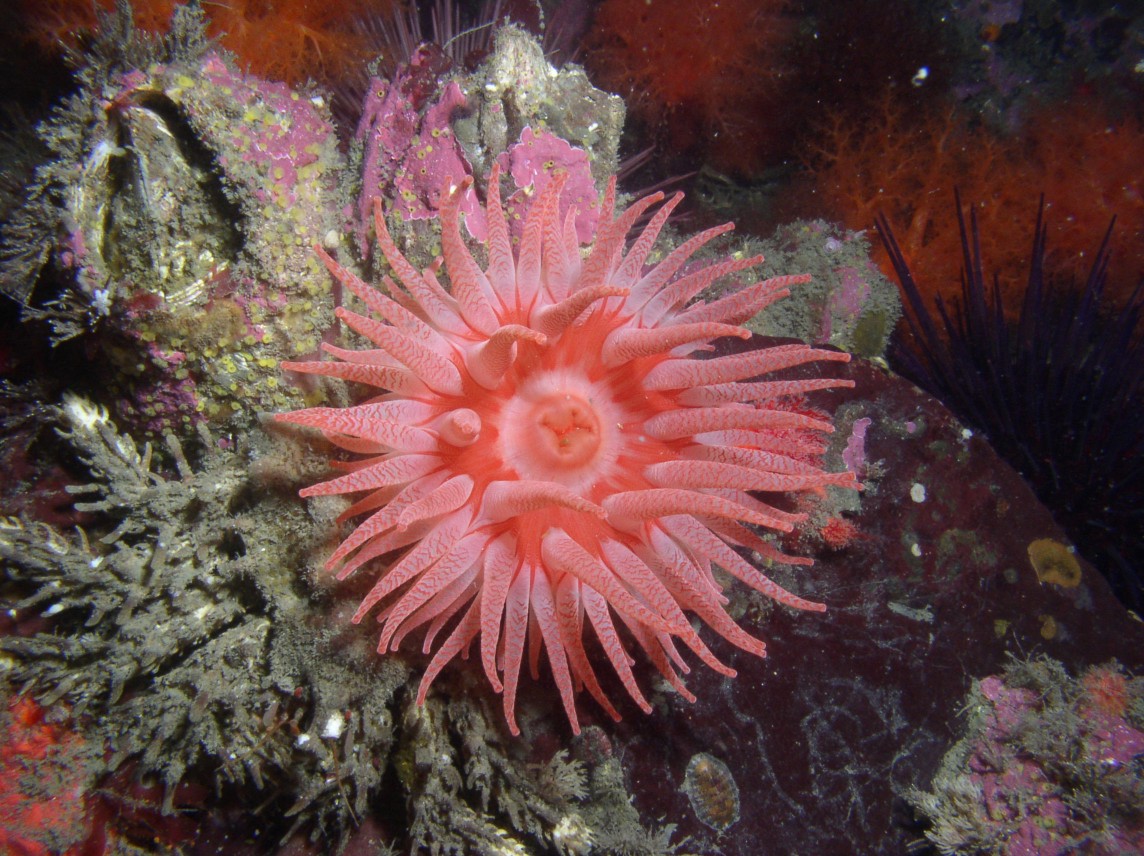
Phyllolithodes
papillosus crabs often take shelter under the
anemone.
Photo by Kirt Onthank summer 2007
Placetron wosnessenskii crabs also seem to frequently shelter under the anemones. Photo by Kirt Onthank, summer 2007
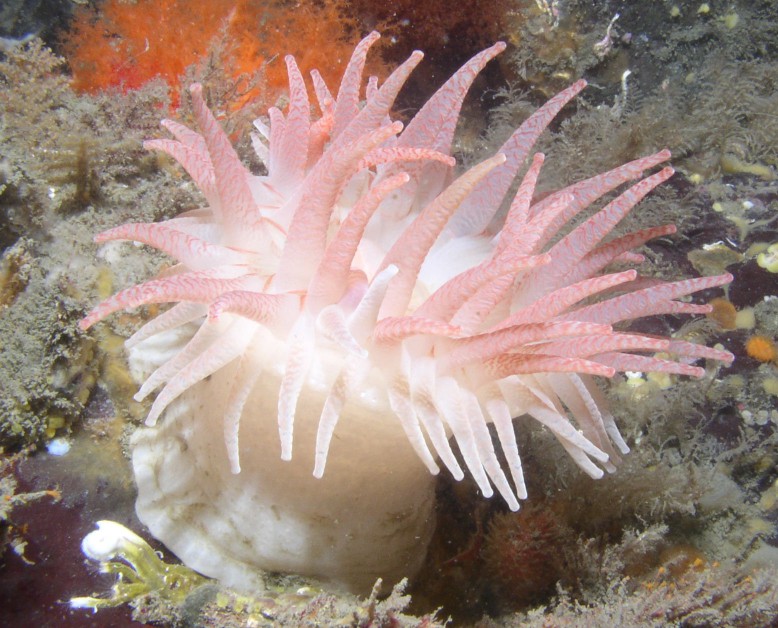
Underwater photo of a white individual by Kirt Onthank, July 2007
Authors and Editors of Page:
Dave Cowles (2007): Created original page
CSS coding for page developed by Jonathan Cowles (2007)
